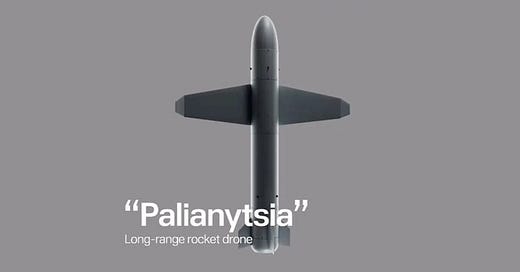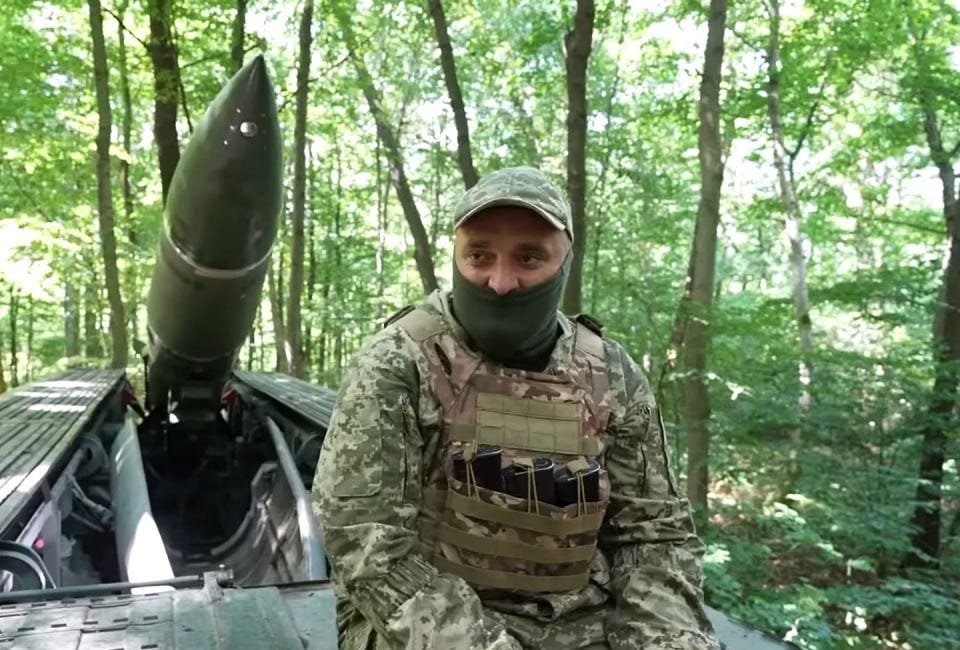Ukraine Has A New Cruise Missile. Now It Needs to Scale Up Production.
Lithuania pledged 10 million euros—$11 million—to the effort.
On Sept. 6, Lithuania pledged 10 million euros—$11 million—to Ukrainian efforts to produce long-range munitions that can strike targets inside Russia, potentially including airfields, headquarters, industrial sites and oil refineries.
It’s clear where Ukraine plans to invest the money. “Lithuania is providing 10 million euros to finance our long-range capabilities, including the Palanytsia rocket-drone,” the Ukrainian defense ministry announced on Sept. 11, citing defense minister Rustem Umerov.
The Palanytsia is a small ground-launched cruise missile that Ukrainian engineers developed from scratch starting in late 2022 or early 2023. The rocket-boosted, turbojet-powered missile—which should range around 400 miles—is a big part of Ukraine’s solution to a vexing shortage of deep-strike munitions.
While the Ukrainian intelligence directorate has overseen development of a wide array of improvised strike drones—including modified sport planes that range as far as 1,100 miles and have struck Russian air bases as far away as the Russian Arctic—these drones are boutique products.
They’ve proved difficult to produce at scale, which is why the deepest strikes, such as those in Murmansk, are rare—occurring no more frequently than every few weeks.
And Ukraine’s allies have been little help. Thirty months into the war, the Russians have lobbed tens of thousands of glide bombs, around 10,000 cruise and ballistic missiles and thousands of heavy strike drones at Ukrainian cities, killing thousands of civilians.
Yet Ukraine’s allies continue withholding permission for Ukraine to use its best foreign-made munitions—British Storm Shadow and French SCALP-EG cruise missiles and American Army Tactical Missile System rockets—against targets inside Russia.
If this changes soon—and there are signs it might—it’ll be because Iran recently began supplying Russia with ballistic missiles. A “dramatic escalation,” according to U.S. Secretary of State Antony Blinken.
Clearly unwilling to bet on its allies’ largess, Ukraine is developing its own deep-strike munitions. Ones it can build in large numbers.
Palanytsia is the first. The Ukrainians initially used the missile in combat in August, striking unspecified targets in Russian-occupied Crimea. “I think this will be a game-changer, because we will be able to strike where Russia doesn’t expect it today,” Mykhailo Fedorov, Ukraine’s technology minister, told The Associated Press.
It’s Fedorov’s job to scale up production of the missile—and drive down its nearly $1-million unit cost.
That means paying a premium for a few missiles so that private firms can acquire tooling and hire workers. Subsequent funding would pay for sustained serial production. If that funding is consistent, individual missiles should get cheaper and cheaper as economies of scale kick in.
The U.S. Air Force has been trying to develop a $150,000 cruise missile it can produce in huge numbers. There’s no reason Palanytsia should be any pricier once full-rate production gets underway. A $100,000 unit cost would be a reasonable objective for Fedorov.
Ukraine’s allies have spent billions of dollars financing weapons production in Ukraine. Imagine if Palanytsia cost just $100,000 per missile and Kyiv devoted a billion dollars of foreign financing to serial production. That’s 10,000 missiles.
Enough to answer Russia’s own bombardment of Ukraine missile for missile.
Read more:
The Ukrainian Army Got a Fresh Batch of Tochka-U Ballistic Missiles. Expect Attacks Along the Russian Border.
The Ukrainian army’s sole Tochka-U missile brigade is back in action.






